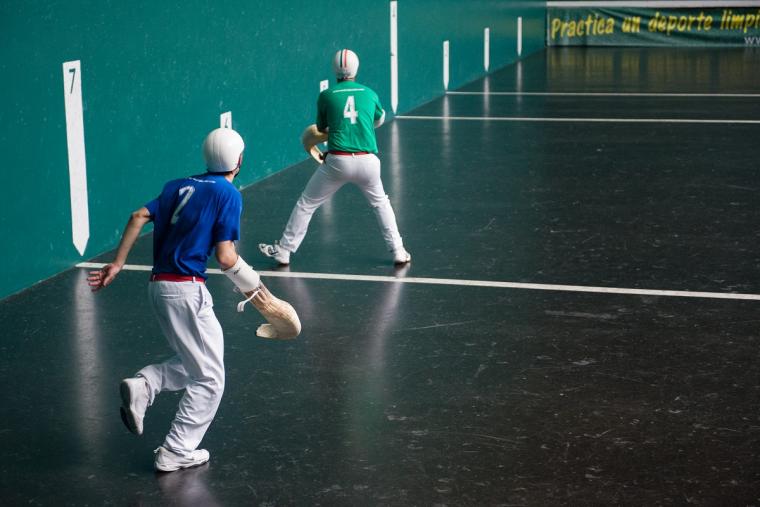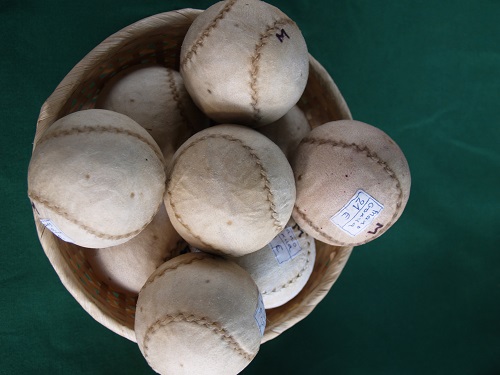
It didn’t generate a lot of headlines, but the third annual U.S. National Jai alai Championship took place over three days in mid-August at Magic City Jai Alai in Miami — which just might be, in Star Trek terms, the sport’s final fronton. Indeed, the facility is considered the “Yankee Stadium of jai alai” and could help tap a new audience for the sport nearly 120 years after its first appearance in the United States at the 1904 World’s Fair in St. Louis.
The U.S. National Jai Alai Championship tournament kicked off Aug. 19 with amateur participants in the Masters Division, the Professionals Division was held Aug. 20, and the final competitions in both categories were played Aug. 21. The tournament was sponsored by BetRivers online gaming, which is part of the BetRivers Sportsbook & Casino service, with locations in the Midwest and Northeast. More than 60 athletes from across the United States competed for more than $25,000 in prize money, and all three days were streamed on WatchJaiAlai.com.
“We are proud to be the premier destination for professional jai alai in the U.S. and are thrilled with the level of play and audience engagement around this event, which continues to build every year. Fans really soak up this event and rally around the sport,” Scott Savin, Magic City Jai Alai’s chief operating officer, said in a statement. “The sport of jai alai is thriving and looks forward to a robust new chapter with an expanded audience.”
That new chapter is Battle Court, a new team jai alai concept that begins its second season Sept. 23 and features four six-person teams — the Cesta Cyclones, the Chula Chargers, the Rebote Renegades and the Wall Warriors — facing-off with head-to-head competition against each other in Singles and Doubles matches every week through Nov. 18. ESPN will cover the season via streaming on ESPN3 and the ESPN app.
In order to truly appreciate Battle Court and how it’s attempting to make jai alai more palatable to today’s sports fans, you first need to understand “the world’s fastest game,” with a ball routinely exceeding speeds of 150 miles per hour.
Jai alai developed in the Basque region of Spain from a form of handball and dates back to the 14th century. An old Orlando Sentinel article succinctly summarized the rules, calling it “similar to racquetball [and] played on a long, narrow, three-walled court. Players catch and throw a rock-hard jai alai ball using a crescent-shaped cesta, a basket of woven reeds, strapped to their right hands. A typical jai alai court is 180 feet long, 40 feet high and 50 feet wide. Spectators sit in an auditorium and are separated from the court by a wire-mesh screen, which replaces one of the side walls. … The object of the game is to throw the ball in such a way as to make it difficult for opponents to catch.”
 “It’s sort of like racquetball on steroids, in the sense that it’s a three-sided court, and our front and back walls are made out of concrete,” Savin told Fox News Digital. “The analogy we used sometimes is if a baseball player had to catch and throw with the gloved hand. So imagine the guy is catching it with his left hand, and then he can’t transfer and throw with his right. He’s got to throw the baseball to the base or back to home plate with his gloved hand. It takes a tremendous amount of athleticism. The players are very, very highly skilled because you have to play the game right-handed. If you’re a lefty, … [you] have to learn to catch and throw with [your] right hand.”
“It’s sort of like racquetball on steroids, in the sense that it’s a three-sided court, and our front and back walls are made out of concrete,” Savin told Fox News Digital. “The analogy we used sometimes is if a baseball player had to catch and throw with the gloved hand. So imagine the guy is catching it with his left hand, and then he can’t transfer and throw with his right. He’s got to throw the baseball to the base or back to home plate with his gloved hand. It takes a tremendous amount of athleticism. The players are very, very highly skilled because you have to play the game right-handed. If you’re a lefty, … [you] have to learn to catch and throw with [your] right hand.”
As SDM recently reported: “In its boom time, jai alai was like roller disco: impenetrable to those who looked in from the outside and hot and happening for those who played and who followed it. But coincidentally, the last time it was also wildly popular was when roller disco was too, meaning the late 1970s and early 80s. These days, the sport is struggling to find players and to hold onto its facilities. … Jai alai frontons … are still found in Philippines and in Latin America. The sport has long been dominated by players from Spain, France, Cuba and Mexico. Its original popularity stateside was boosted by the fact that it was a basis for pari-mutuel betting.”
Which brings us back to the present. Savin secured at least four ownership groups, each paying $100,000 per season, to be Battle Court team owners, according to GamingToday.com. “Magic City provides a base player salary — it won’t reveal it — insurance, and a $500,000 bonus pool,” the site notes. “There could be upwards of $50,000 in prize money and some revenue-sharing for owners. But there would be no breaking even, and ownership would end with the season. It seemed more like sponsoring a very boutique softball team.”
All four ownership groups from Battle Court’s first season returned for Battle Court II, GamingToday.com reports, and Savin has called the concept one of his “better ideas.”
“[Jai alai players are] not paid like basketball players or football players or baseball players. They’re not making millions of dollars,” Savin told Fox. “The median player earns about $50,000-[$]55,000. The top guys earn a little bit over $100,000,” he said. Every guy in the locker room appreciates the ability to be a professional athlete. I think they all grasp they’re part of an effort to save a sport. … [T]ypically on a night in Florida or in Connecticut in the Eighties, 10,000 people came to watch jai alai. There’s a huge effort both by the athletes and by all of us behind the scenes to save something that we all believe is very well worth saving and to make it economically viable and to expand. Our goal is … more teams, more cities, more countries.”
Right now, Savin is emerging as jai alai’s savior. Magic City Jai Alai has been active since 2018, when, according to USBets.com, he “resuscitated the sport by breaking the players union and recruiting former University of Miami athletes to learn the sport and compete.” He then cut a deal with BetRivers and went on to create Battle Court and its ownership structure.
“We’re pretty confident there’s a future,” Savin told The Associated Press. “At least there’s a present, so that means we have a fighting chance at a future.”

